Ancient Roman Military
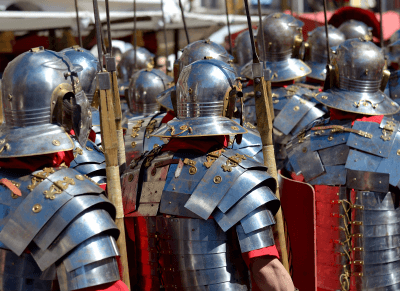
The Roman military was one of the most advanced armies ever to be seen until the modern age.
One of the first full time, paid professional armies in the world, even just the threat of Roman military might was enough to quickly frighten potential enemies into submission without a single blow being struck.
The Roman military was arguably the single most important reason for the enormous expansion of Roman territorial control over vast swathes of what we call modern-day Europe.
Although the fearsome legions get a lot of attention, and there is no doubt this element was the key component of the Roman war machine, the Roman army also consisted of other less written about units such as cavalry and a naval fleet.
In this section we will explore the Roman army, the impact, strategies and equipment, from the Republic through to the fall of the Empire. Details, including foundation, placement and important campaigns, of the individual Roman Legions, important battles on ground and sea, and more will all be explored.
Table of Contents:
This article on the Roman military covers the following topics:
| 1) Roman Legions | 5) Roman Navy |
| 2) Roman Armor | 6) Siegecraft |
| 3) Praetorian Guard | 7) Key Battles/Battle Index |
| 4) Roman Cavalry |
|
Roman Legions
The Roman Legion, the ultimate military machine of the ancient world, was the catalyst that spread Roman conquest and civilization throughout the known world. The core of the Roman legion consisted of heavily armored infantry.
Disciplined and well trained legionaries fought in closed ranks against many warrior based armies, where each man fought for personal glory.
With superior tactics and organization, designed specifically for technology such as the gladius, the legion was an unstoppable force for nearly a millennium.
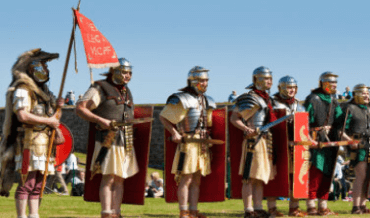
Republican Legions
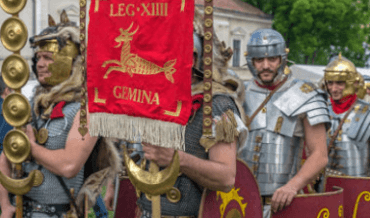
Imperial Legions
Roman Armor
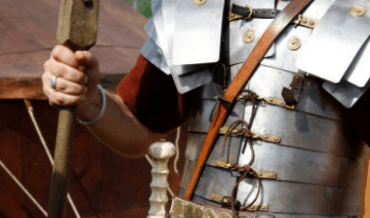

Despite modern-day depictions of a Roman army as a frightening yet beautiful spectacle with every legionary immaculately dressed in shiny, identical armor, this was not always the case.
In the early days of the Roman Republic, legionaries had to arm themselves at their own expense. This meant that quality and quantity depended a great deal on the individual’s wealth, and meant that there was a great deal of disparity between the soldiers.
In the early days of the Republic, the armor of the Roman soldiers borrowed extensively from the type worn by previous civilizations and Rome’s neighbors, most notably the Etruscans and the Greeks.
As time went on, the Roman military machine became better armed (thanks to state funding) and was adapted in accordance with who the enemy was and the tactics that they employed.
The Romans also learnt from the people they encountered as the empire expanded.
For instance, the armor and tactics of the Sarmation cavalry were soon incorporated into the Roman cavalry, which was speeded along by the incorporation of the Sarmations into the Roman auxiliary units. Related Forum discussion: Sarmatian Auxiliaries in Britannia.
As well as the change over time, Roman armor itself varied greatly depending on who was wearing it. The armor of a low-ranking legionary was far different than that of a general for instance.
Plus, of course, it wasn’t just Roman soldiers that wore armor. Other groups such as gladiators in the arena wore a great range of different body armor when they fought.
FIND OUT MORE ABOUT ROMAN ARMORPraetorian Guard
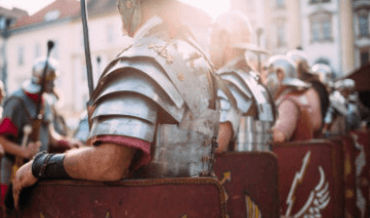
The Praetorian Guard served as the Emperor’s personal bodyguard, although on more than one occasion they were responsible for harm coming to their master rather than protecting him!
The Praetoria Cohors, as they were first known, came about along with the emergence of great soldier politicians; Scipio Africanus being among the first to adopt these personal guards.
Formed from the best, bravest and most loyal of his own men, the Praetoria were generally exempt from any standard camp duties, save for protecting their general.
The concept of a personal guard likely dates back to the kings and rulers of prehistoric times, as power struggles, jealousy and revenge were certainly issues around back then too, but the Praetorian Guard as we recognize it today was formed with Octavian’s succession as Augustus.
This even saw the Praetorian Guard as an institution established when Augustus - after witnessing the previous decades of unrest that culminated in the brutal assassination of his uncle and step-father Julius Caesar - wisely saw the need for a large body of soldiers personally loyal to him, rather than just exclusively existing for the glory of Rome.
The headquarters of the legion, or praetorium, provided the name. The soldiers were indeed highly loyal to Augustus, but subsequent Emperors were not so able to command the loyalty of the Guard, and the body, recognizing its power, became more heavily involved in politics.
FIND OUT MORE ABOUT THE PRAETORIAN GUARDRoman Cavalry
Cavalry tactics and fighting on horseback was a critical component of battles in the middle ages and the renaissance period afterwards. It was also a major battle tactic of certain enemies of Rome.
And yet, despite this, it was never really a significant element of a Roman battle force at any point except perhaps towards the very end of the late Imperial period.
The role of cavalry in the Roman thought process when it came to battles with her enemies was typically not high up on the list. This way of thinking did not exactly encourage young men to become proficient horsemen, which probably fulfilled a cycle which never really ended. Far more status was attached to being a legionary and fighting hand to hand combat.
Generally, the cavalry was used as light skirmishing troops, and mounted archers whose job was to patrol, act as scouts and messengers and to provide a mobile defensive screen while the legion was massing in battle array.
Because the Romans themselves were, in the main, not proficient riders for the reason listed above, the Roman cavalry (Equitatus) was primarily comprised of non-Roman horsemen assimilated from conquered peoples.
Not only were these people better riders, but they also brought with them tactics and ideas which the Romans used to their advantage in future battles with others.
FIND OUT MORE ABOUT THE ROMAN CAVALRYRoman Navy
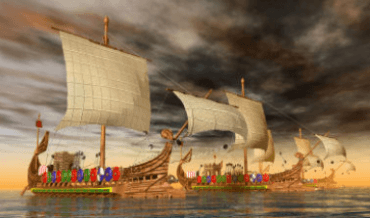
The Roman empire expanded outwards from the city of Rome, which is located roughly in the middle of the Italian peninsular.
Being centrally located like this meant that there was a lot of land to conquer north and south, which meant in the early days of there was very little need for boats or any kind of navy.
As Roman influence expanded, it soon became clear to them that they were way behind other civilizations such as the Greeks and the Carthaginians, who had large fleets and a lot of experience in conduction maritime military operations.
As war with Carthage edged closer for control over the Mediterranean Sea, the Romans realized the military strength of the legions needed to be complemented with a powerful navy too. During the First Punic War a large fleet was built, allegedly, using a stranded Phoenician vessel as a prototype.
Over the next few decades, the ingenious Romans modified and adapted ship designs and honed their naval fighting skills, as well as ramping up production of vessels.
Ultimately, the Roman navy became such a powerful force in such a short time that during the Second Punic War, Hannibal abandoned the once formidable Carthaginian fleet to focus on land operations.
And then, almost as soon as it had developed, the power and importance of the navy began to wane.
With the final destruction of Carthage, and the end of the Third Punic War in 146 BC, Rome was the master of sea power in the Mediterranean. With no more challengers in the area, save for a few bands of pirates, the navy slipped into the logistical role of support to the legions and providing escort for trade vessels and grain shipments.
This was not the complete end for the Roman navy as a military force, as it had brief resurgences during the invasion of Britain and the civil wars that led to the Imperial period, but it was never the same as it had been during the wars with Carthage, simply because it did not need to be.
FIND OUT MORE ABOUT THE ROMAN NAVYSiegecraft
The Roman army, with its powerful and organised legions, was ideally suited to winning large scale battles out in the open.
Partly because of this fact, which was not lost on her enemies, and partly because it was an action of last resort, quite often the army would come up against an opponent holed up in a strong fortification that needed to be overcome.
Legions carried with them field artillery which meant they were well equipped to deal with opposing fortifications. Their policy of having artisans and sappers in the ranks meant that any unit could build defenses and attack those of the enemy.
FIND OUT MORE ABOUT ROMAN SIEGECRAFTKey Battles/Battle Index
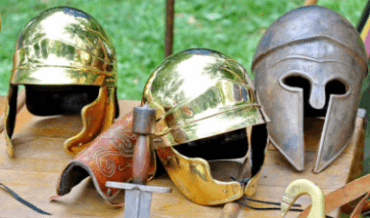
A large number of tribes and cultures were absorbed peacefully, if not always entirely willingly.
For many, who had typically spent generations fighting with their neighbors, they recognized the advantages of being a part of and protected by such a powerful military force as the Romans.
Others may have been tempted by the riches and trappings of luxury that many Romans enjoyed. For a tribe who knew very little of the wider world, seeing goods and items from distant lands that were completely unknown to them, such as silk from the East, must have been extremely alluring.
And then there were groups that simply recognized that they had no hope whatsoever in resisting the mighty Romans, and submitted to their rule without a fight.
The Romans were often gracious in such a scenario, probably glad at not being bogged down in expending time and resources dealing with a people that could be tricky if they used tactics such as guerrilla warfare.
Quite often kings and tribal leaders were allowed to keep their positions and continue to rule over their people, providing that they paid tribute to Rome and were willing to accept any demands or instructions they were given.
But of course, there were many tribes and their leaders who would rather die than submit to anyone. One of the most famous of these was the Iceni tribe in Britannia led by Boudicca.
Typically the Romans would try to incorporate tribes in the more peaceful manner listed above, believing it to be far less hassle overall, but when this failed the military would complete the job.
In contrast with the (almost) friendly methods employed at the outset, when the military got involved it was a bloody and often cruel outcome.
Aside from the soldiers that had fought against them, women, children and men of all ages were often butchered will little mercy and property burned.
Those soldiers lucky enough to be left alive were quite often maimed, such as having a hand chopped off, so that the could never take up arms against Rome again.
This brutality may have been fuelled in part from anger and frustration at the incredulity of a tiny rag-tag tribe daring to defy the mighty Romans, and therefore a sense of revenge, but the primary reason was to act as a warning to others who were yet to come up against Roman expansion.
Frightening other peoples into easy submission rather than getting involved in time-consuming skirmishes was the ideal way to fuel further expansion and quickly increase the size of the glorious empire.
All of this meant that during the many centuries that the Roman empire existed, there were a great many battles fought.
It is also worth remembering that the Romans were by no means always on the offensive, particularly in the early days of the Roman Republic and the first stages of growth and expansion. The Romans frequently came up against other, often powerful, civilizations such as the Carthaginians which led to military conflict.
As the Roman empire expanded, frontier edges stretched further away from Rome which could make communication difficult and stretch supply chains, which opened up little gaps for opportunistic bands or revolting tribes to try and exploit through attacks.
Click on the button below to see a timeline of key battles that took place involving the Romans, from the early days of the Roman Republic right up to the 5th century AD.
VIEW THE MAJOR ROMAN BATTLE INDEX

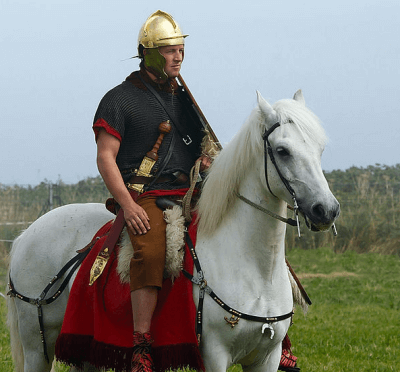
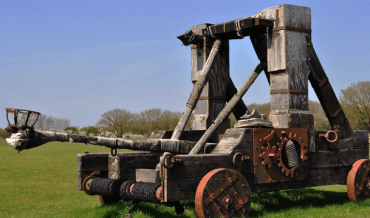


Legions of Rome: The Definitive History of Every Imperial Roman Legion
by Stephen Dando-Collins
Featuring more than 150 maps, photographs, diagrams and battle plans, Legions of Rome is an essential read for ancient history enthusiasts, military history experts and general readers alike.